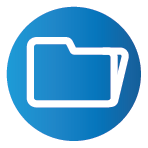3rd Grade Common Core: RI.3.1
Common Core Identifier: RI.3.1 / Grade: 3
Curriculum: Reading Informational: Key Ideas and Details
Detail: Ask and answer questions to demonstrate understanding of a text, referring explicitly to the text as the basis for the answers.
119 Common Core State Standards (CCSS) aligned worksheets found:
Discover how polar bears have adapted to live in the Arctic.
Level:
Filing Cabinet
Logged in members can use the Super Teacher Worksheets filing cabinet to save their favorite worksheets.
Quickly access your most used files AND your custom generated worksheets!
Please login to your account or become a member and join our community today to utilize this helpful feature.
This non-fiction article about owls describes how they're adapted for nighttime hunting. Includes a page of reading comprehension questions, a vocabulary activity, and a writing prompt.
Level:
Learn about a monarch butterfly's metamorphosis as it transforms from a caterpillar into a butterfly.
(Approx. Grade Level: 3-4)
(Approx. Grade Level: 3-4)
Level:
What is unique about the trees in this strange place? Students learn the secrets of the painted desert.
Level:
Hibernation is when animals slow down for the winter and fall into a sleep-like state. Learn about animal hibernation with this interesting article.
Level:
Find out how energy from the sun can create electricity. This passage is written at a 3rd grade reading level.
Level:
Read about the differences between carnivores, omnivores, and herbivores.
Level:
Discover what's unusual about a chipmunk's cheeks, along with other interesting chipmunk facts.
Level:
Learn dozens of fascinating facts about giraffes, then answer the comprehension questions.
Level:
I bet you didn't know that an octopus can vanish in a cloud of smoke. It's just one of the unique ways an octopus can defend itself.
Level:
Students can discover Egypt's Great Pyramid and the Sphinx in this quick reading comprehension worksheet.
Level:
The history of piggy banks and how today's popular design was actually a mistake.
Level:
Why does a camel have humps? It's not to store water, but rather to store fat. Separate camel facts from fiction with this article.
Level:
Brief, nonfiction passage explaining how pencil graphite was discovered, and what the numbers on pencils mean.
Level:
Read the article about waterspouts and answer the comprehension questions.
Level:
An amazing article about your brain, plus a series of seven reading comprehension questions to go with the article.
Level:
Find out how to build a mealworm habitat and raise your own darkling beetles.
Level:
Choose the correct vertebrate group for each description, match the animal with its vertebrate classification, and three short-answer questions.
Level:
Earthworms have no eyes, no nose, no ears, no bones, no arms, and no legs. They do, however, have very complex bodies.
Level:
Learn about each type of cloud with this article and illustration.
Level:
Answer the question on this worksheet. Questions include: "Can a dolphin drown? Explain." and "Is a bat a mammal or a bird? Explain."
Level:
Are grasshoppers a farmer's friend or foe? Actually, both. Find out how grasshoppers can help and harm humans.
Level:
There are lots of fun facts about Polar Bears, Grizzly Bears, and Giant Pandas in this article.
Level:
Learn all about roly-poly pill bugs, which curl up in a ball to protect themselves.
Level:
Find out how pattern camouflage, color camouflage, and mimicry can benefit predators and prey.
Level:
Chameleons can change color, rotate their eyes, and have toes that are specially adapted for climbing.
Level:
Learn about the many unique moons of our solar system. (approx. 3rd grade level)
Level:
Quick-read paragraph with factual information about the White House.
Level:
Students read a short nonfiction paragraph about cheetahs and answer the questions that follow.
Level:
An article about the history of the Jack o' Lantern. Includes comprehension and vocabulary questions.
(Approx. Grade Levels: 3-5)
(Approx. Grade Levels: 3-5)
Level:
Keep a record of your family's expenses for one week and group them according to needs and wants.
Level:
Quick-read passage teaches students about a cave that is so long, it hasn't been entirely mapped.
Level:
Read about the many different habitats found within a mountain ecosystem.
Level:
Learn about the events that cause winter, how animals prepare for winter, and wintertime activities people enjoy.
Level:
Another quick read paragraph with facts and questions about the Amazon River.
Level:
A short article about Martin Luther King, followed by a set of reading comprehension questions.
Level:
Puerto Rico's unofficial version of a national animal is the coqui. This tiny frog happens to be the loudest amphibian in the world! Learn all about it in this 2-page article.
Level:
Read this short passage about the wood frog, an amazing amphibian that freezes as a means of hibernation. Then answer the questions that follow.
Level:
Want to learn all about coral reefs? This article describes the ocean's most unique living community. Home to thousands of species of fish and other sea animals, coral reefs play an important role in the well-being of the Earth. This reading comprehension article includes short answer, multiple choice, and vocabulary questions.
Level:
This short reading comprehension passage gives an overview of gladiators in ancient Rome and includes 5 follow-up questions.
Level:
Look out! The world's second largest, and most ferocious shark may be swimming in an ocean near you.
Level:
Summarize the main idea of the book and list interesting facts you've learned.
Level:
This third-grade level reading comprehension passage describes some of the differences between tortoises and turtles. Students will read it and be able to answer several questions, complete a vocab activity, and respond to a writing prompt.
Level:
Hoover Dam was built during the Great Depression, in the Colorado River, on the border between Arizona and Nevada.
Level:
This short nonfiction article teaches about the oldest known written piece of literature in history: The Epic of Gilgamesh. Learn what makes it unique, then answer the questions.
Level:
This short nonfiction article discusses various animals and why and how they spit! The high-interest text is paired with three comprehension questions.
Level:
Read this short article about several animals' eyes and vision abilities. Learn who has the largest eyes, who can see from high in the sky, and more fun facts about animal eyes.
Level:
Crater Lake is the deepest lake in the United States. It was formed in a crater when a volcano, Mount Mazama, collapsed.
Level:
Read about Arches National Park, including how it formed, travel tips for visiting, and some of the most popular sights to see while there. Then answer the reading comprehension questions that follow.
Level:
Learn all about service dogs and how they help people in this fascinating article! Reading comprehension questions, vocabulary, and a writing prompt are included.
Level:
This short reading passage is about one of the most well-known historic buildings in the world. Learn a bit about the building and answer several questions to complete this worksheet.
Level:
Learn the three segments of the world's most populous type of animal and other facts! Then answer questions, including identifying true or false statements and the author's purpose.
Level:
Students will enjoy reading about bats, skunks, owls, and other nocturnal animals.
Level:
Learn about two different types of germs: bacteria and viruses. Find out how to prevent germs from making you sick. Discover a special type of bacteria that is actually important to your health.
Level:
This poem tells about the seasons. It's laid out to visually represent the cycle that moves from one season to the next. After reading the poem, students answer questions, and complete a vocabulary activity and a writing prompt relating to what they've reead.
Level:
Read all about the unique wading bird known as the spoonbill with this short reading comprehension passage. Then test your understanding with 4 questions.
Level:
How did the U.S. go from 13 colonies to 50 states? How does a place become a state? Learn about the path to statehood, then complete ordering and matching questions, a crossword, and more!
Level:
Niagara Falls is located between the United States and Canada. It is a popular tourist destination for visitors from around the world.
Level:
The animals in this article all have one thing in common: they lack teeth, yet they're able to eat just fine. Read about how other body parts help these animals eat their food. Then answer the questions on the worksheet.
Level:
This worksheet features a scenic landscape illustration, including mountains, hills, a plain, a river, a plateau, and a volcano. Third grade students are tasked with matching each formation with its correct definition and location on the illustration.
Level:
Glacier National Park covers over a million acres of Montana. It is home to grizzly bears, moose, wolverines and lynxes.
Level:
This short passage is all about the Mall of America in Bloomington, Minnesota. It has facts about the mall's size, the things you can do there, and more!
Level:
Learn about the anatomy and behaviors of one of the most feared spiders in the world.
Level:
Read up on West Virginia's first and only national park. This hidden gem is home to one of the oldest rivers on the planet!
Level:
The big, bright sunflower doesn't just look like the sun. Its head turns to follow the sun every day! You can also find out the only times it doesn't do that in this short reading.
Level:
This short article about dandelions gives an informative overview of the plant's life cycle. After reading the passage, students will answer three reading comprehension questions.
Level:
The Okapi is a strange animal that looks like a mix between a giraffe and a zebra.
Level:
This worksheet has 5 questions to answer after reading a short passage about the kinds of clothing that were worn in ancient Rome.
Level:
Did you know groundhogs can climb trees? They're great swimmers too! They can also whistle and bark. Learn many more fascinating facts about groundhogs in this article.
Level:
Connect the landforms with the matching definitions on this printable science worksheet that focuses on volcanoes, mountains, hills, canyons, plains, plateaus, and more.
Level:
American Founding Father Samuel Adams signed the Declaration of Independence and served in the Second Continental Congress.
Level:
Read about this cool landmark in southeast Tennessee. Then answer the questions that follow.
Level:
Have your students complete this book review form each time they've finished a book.
Level:
A short passage that teaches students about Mount Rushmore.
Level:
Print out this cute story for your students to read and respond to. The worksheet includes comprehension questions, a vocab activity, and a writing prompt.
Level:
This article compares and contrasts river hippos and pygmy hippos. Students can read the article and then answer several reading comprehension questions, complete a vocabulary activity, and respond to a writing prompt.
Level:
Have you ever heard of the pink fairy armadillo? Learn all about this miniature armadillo! This article includes short answer and multiple choice questions, vocabulary words, and a writing prompt.
Level:
Hide these cards around your classroom and have students search for them. When they find them, they'll be able to answer the corresponding question on their worksheet.
Level:
Learn the similarities and differences between butterflies and moths.
Level:
This short passage about squirrels is written at a third-grade level and features questions to test students' understanding of the text.
Level:
Readers of this passage will learn the differences between two animals that look very similar--snakes and glass lizards. Then they'll answer comprehension questions, complete a crossword, and follow a writing prompt.
Level:
Although not the oldest set of laws ever written, Hammurabi's Code was much longer than others of the time. Learn about the famous source of the saying "an eye for an eye!" in these three paragraphs.
Level:
Did you know that a seahorse can't swim well and it can actually die of exhaustion in rough water? Learn many seahorse facts in this article.
Level:
Explore the 5 dwarf planets in our solar system and learn why Pluto is no longer classified as a planet with this educational science printable PDF. Designed for 5th grade students, this resource offers clear explanations of planetary classifications.
Level:
John Jay co-authored the Federalist Papers with James Madison and Alexander Hamilton. He also served as the the first Chief Justice of the United States Supreme Court.
Level:
The aptly named Great Lakes started forming around 14,000 years ago and hold more than a fifth of Earth's fresh water. Read all about them in this informative article.
Level:
This short article is about different types of tongues in the animal kingdom. Students can read the passage and then answer three comprehension questions.
Level:
Your students can read this short article about animal tails and answer the comprehension questions that follow.
Level:
The Grand Canyon is known for its enormous size and colorful landscape. It also reveals some of the most ancient rock layers in all of North America.
Level:
This short article is about the United States' only national forest that is a rainforest--El Yunque National Forest in Puerto Rico.
Level:
Pseudoscorpions are tiny, harmless scorpion-like creatures that can sometimes be found in bathrooms. Read about these interesting arachnids and answer the questions.
Level:
Read this short passage to learn more about the first Olympics.
Level:
The way the earth's rotation and revolution interact with the sun means night can sometimes last 24 hours in some places! This short article helps explain the fascinating phenomenon to students.
Level:
This reading passage about Johnny Appleseed is a perfect way to introduce your students to the famous folk hero. Reading comprehension questions, a vocabulary activity, and a writing prompt are included.
Level:
Professor Al Ligator teaches kids about the five groups of vertebrates. Kids will learn all about mammals, reptiles, birds, amphibians, and fish.
Level:
This entertaining poem about staying up all night is a great way to introduce students to poetry. The worksheet includes three questions for students to answer.
Level:
This short passage teaches readers about ways mammals keep cool in the heat. It talks about animals that sweat, shed, and even take showers or baths! There are three reading comprehension questions, including a graphic organizer, for students to complete.
Level:
Some short-answer thinking questions about a frog's life cycle
Level:
This 2nd grade science activity has your class match each body of water picture card with the correct definition card.
Level:
Yellowstone was the first national park in the United States. It is home to Old Faithful, a geyser that regularly erupts with a spray of water and steam.
Level:
Read all about the dairy capital of the United States: Wisconsin! Then answer a series of reading comprehension questions, a vocabulary activity, and a writing prompt.
Level:
The Navajo Native American people helped the American war effort in World War II in an incredible way! Their language served as a code used by the military to communicate important information that the enemy couldn't figure out. Learn all about the "Navajo Code Talkers" in this social studies text.
Level:
This article about the pronghorn gives information about these fast animals. The article is accompanied by reading comprehension questions, a vocabulary activity, and a writing prompt.
Level:
Have your students read this short passage on apple trees and answer the reading comprehension questions that go with it.
Level:
Learn about the shy and squishy squid! Did you know that a giant squid can grow up to the size of a school bus?! Discover other interesting facts in this printable animal article. Vocabulary words, comprehension questions, and a writing prompt are included in this reading comprehension packet.
Level:
Cut out and hide these cards all over the classroom. Then have students look for them and answer the questions on the attached worksheet. It's an engaging way to get students learning about the history and culture of ancient Rome.
Level:










